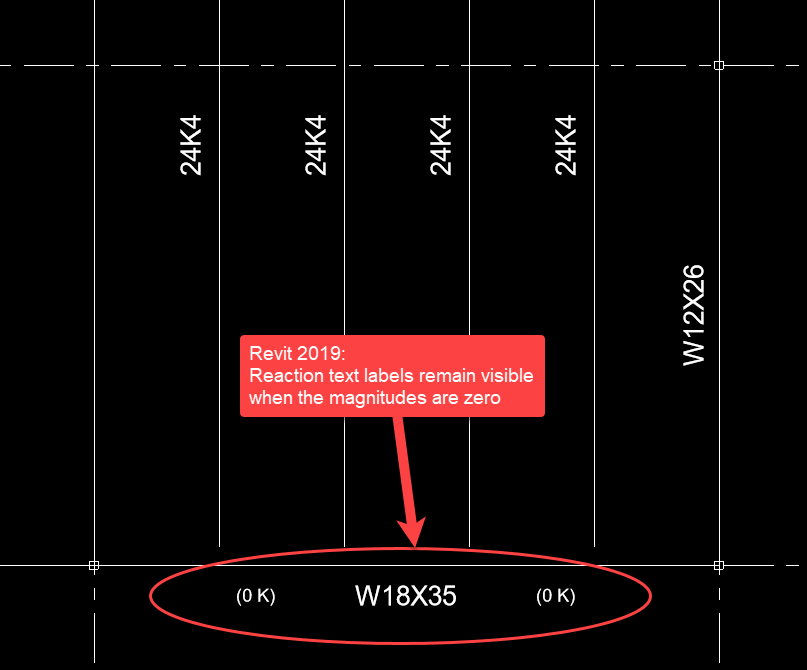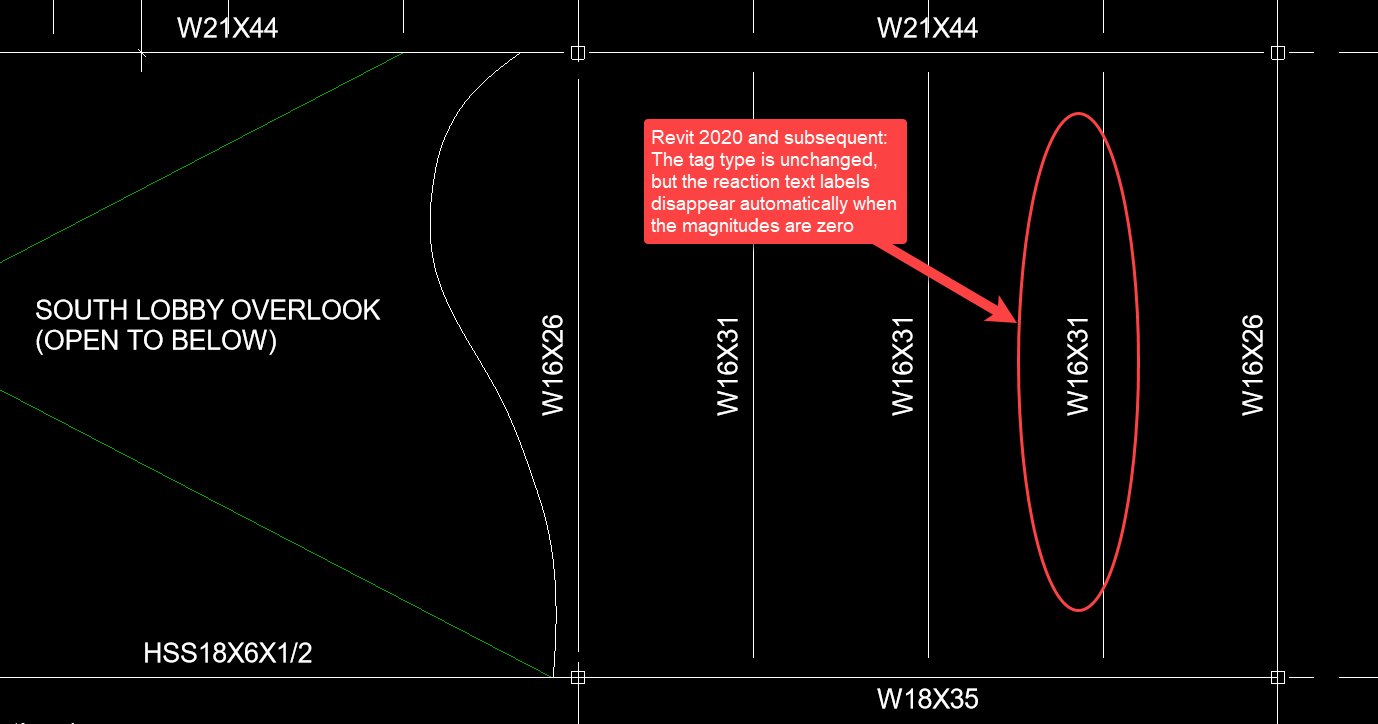When producing a set of drawings, engineering teams often find it necessary to document the reaction forces at the ends of beams for the connection designer to reference. ENERCALC for Revit provides a framework of simple tools to easily annotate beam end reactions on Revit views using a tag that displays the force results from the ENERCALC SEL calculation for each beam element. The tag family used for this annotation is included in the ENERCALC for Revit program installation and is loaded into Revit projects automatically.
The reaction forces used for display in Revit are drawn directly from the beam or girder calculation for the element. The following guidelines outline how these reactions are obtained:
•Maximum end reactions are obtained from the reactions specified on the “Reaction Combinations” tab in ENERCALC SEL
•Prior to any adjustment or rounding, the maximum end reaction reported in Revit will exactly match the reaction reported in ENERCALC SEL under Calculations > Support Reactions > Overall Maximum
•If reduction of LL or LR loads is in use, the reported reaction will reflect the reduced reaction (if the controlling load combination includes LL or LR)
The user may view the envelope reaction and the controlling combination at any time via the Element Manager. When a calculation is selected in the summary table, this information is found on the “Beam Supports” tab.
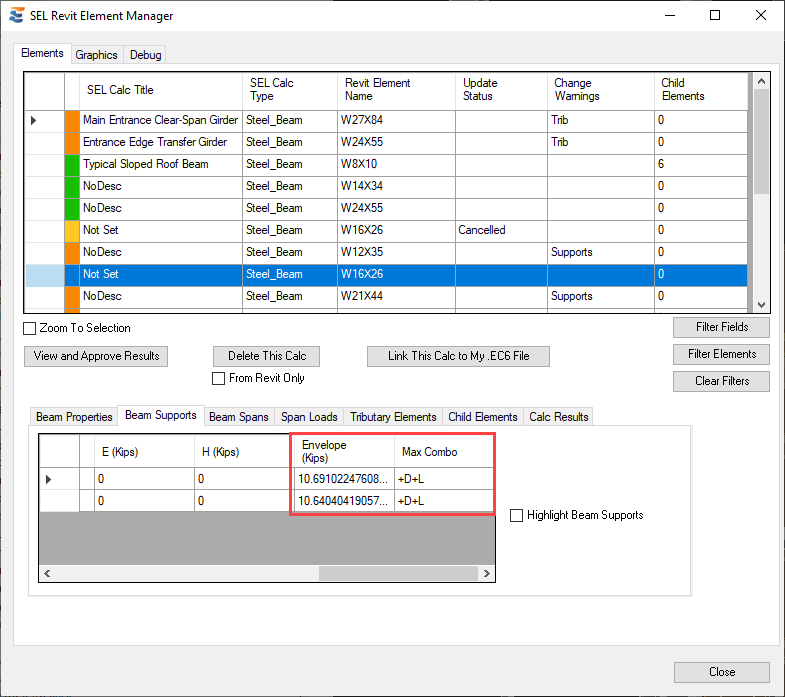
In order to provide ease of customization for various engineering teams to implement their own office standards, a set of controls are provided under Preferences > Active Model Preferences > Beams. These options permit the following customizations:
•A threshold (Kips) for hiding reactions less than a specified limit
•A custom multiplier to apply to all reactions from analysis if desired
•A custom rounding tolerance (Kips) for adjusting all reactions from analysis
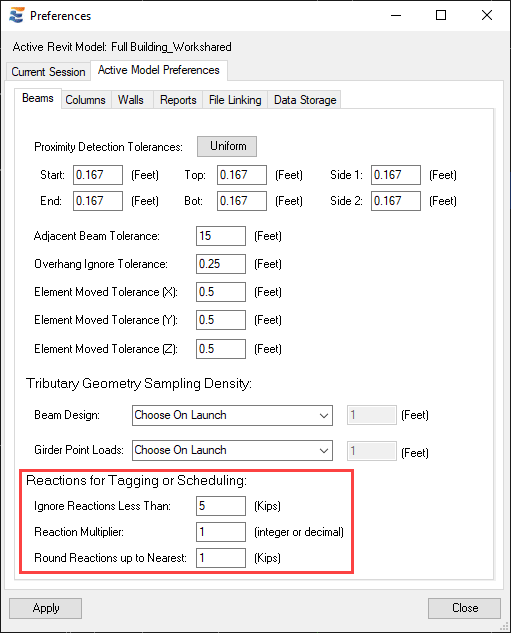
When a beam calculation “Save and Close” operation is completed, the envelope end reactions from the calculation will automatically populate to a pair of Revit shared parameters on the beam, which are visible in the native Revit Properties pane when the beam is selected. The magnitudes of the reactions will be automatically adjusted according to the rules set in the menu above prior to being displayed in the parameter fields. Note that the parameters are by default locked against user modification. Changes to these values should derive directly from the calculation and rounding preferences rather than from manual editing.
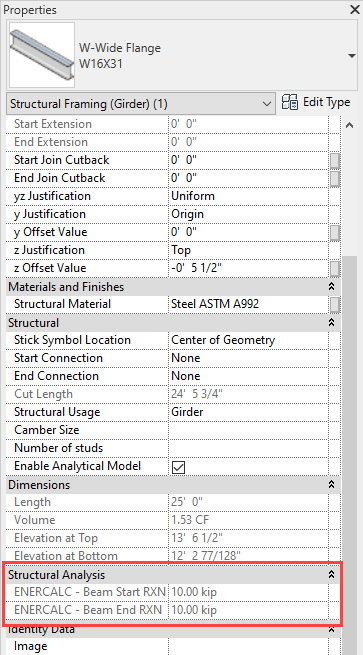
The user does not need to create or manage these parameters; they are created and managed automatically by ENERCALC for Revit. However, users should be aware that removing the associated shared parameter from the project (via the native Revit controls under Manage > Project Parameters > Remove) will cause the loss of all reaction data stored on individual beam instances.
Once a calculation has been finished and the reactions are automatically updated, they may be annotated on plans by either placing new framing tags or toggling existing framing tags to the type named “Structural Framing Tag – ENERCALC (20XX)”. The version designation “20XX” corresponds to the version year of the Revit project. As indicated previously, the user does not need to manually load this family. Changing the tag type will make the reaction magnitudes visible.
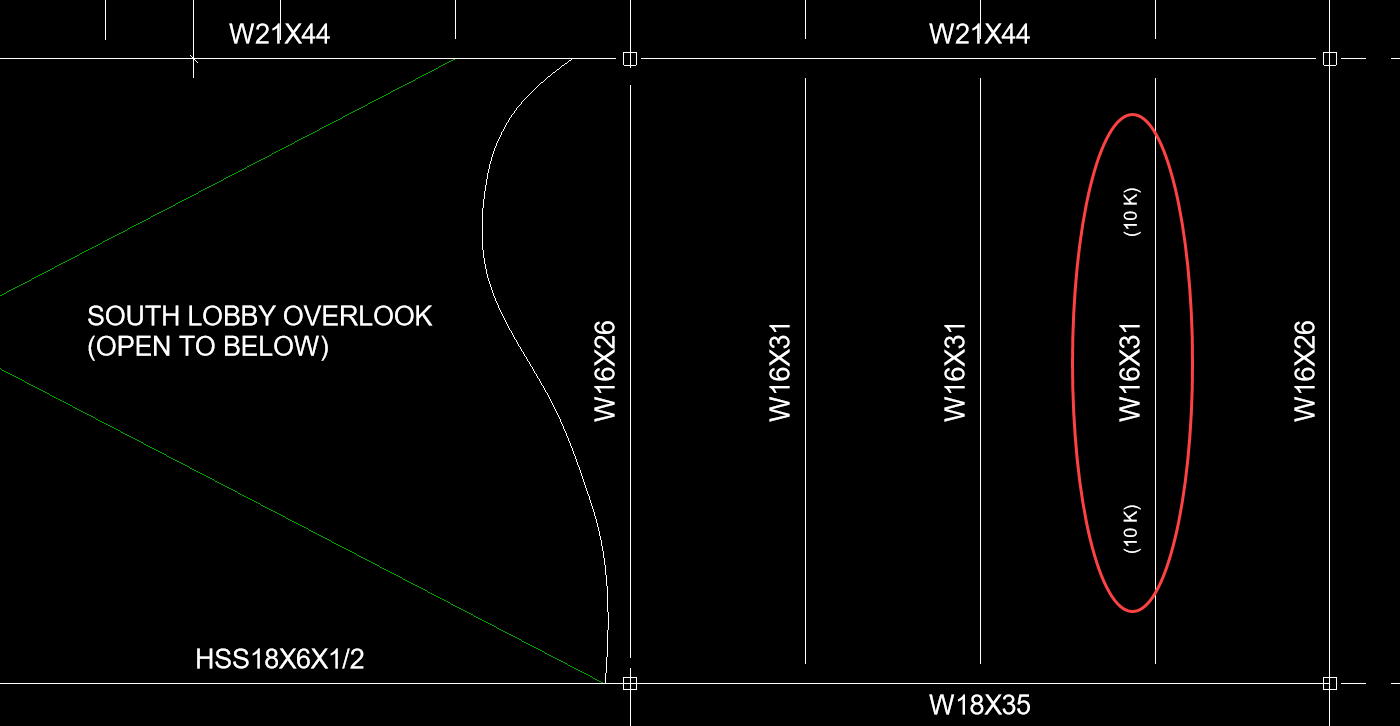
Once a beam calculation has been finished with a specific set of rounding controls, the reaction parameter values will NOT automatically update in real-time if the rounding settings are subsequently changed in the Preferences menu. Instead, the reactions displayed in the parameter values will be updated the next time the calculation is either recalculated or edited and saved.
Similar to the handling of unity checks and other calculation results found in the Element Manager, beam reactions are erased automatically if a change warning invalidates the design calculation. Due to differences in the parameter capabilities between Revit 2019 and Revit 2020 - present, users will observe that the tag display behavior varies. In Revit 2019, reactions are displayed as “(0 K)” when the reactions are zero or have been erased. In Revit 2020 and subsequent versions, zero or blank reactions will not be displayed.
